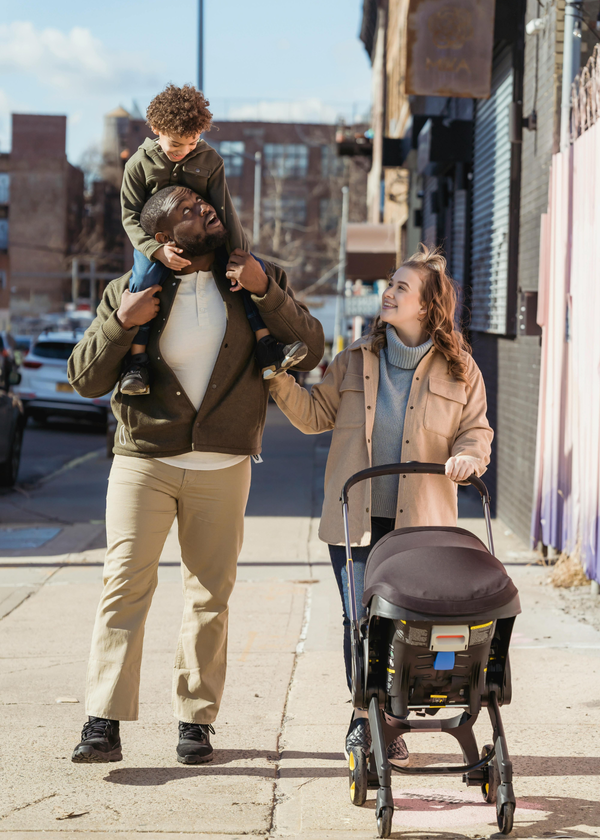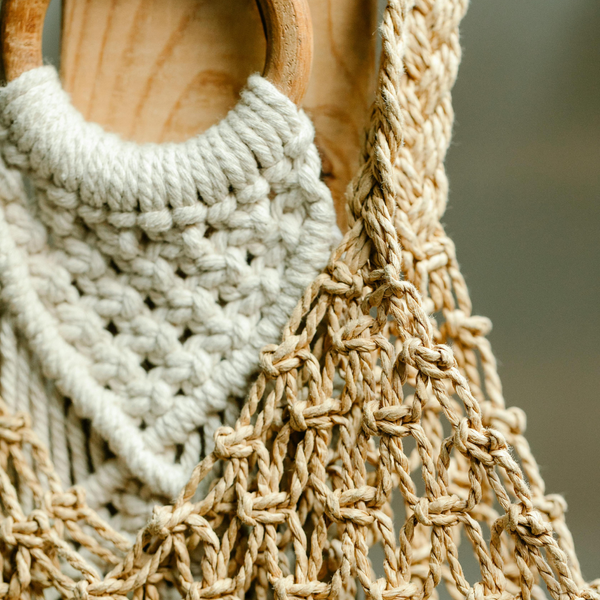The Essentials of Bag Types
When diving into the fashion world, understanding the nuances between different types of bags can be like deciphering a complex code. At the forefront of casual versatility stands the tote bag, known for its simplicity and robust capacity. Unlike more structured shoulder bags or crossbody bags, tote bags offer a spacious main compartment and are often without the multiple pockets and zippers typical of other bags.
Normal bags, a term that encompasses a variety of styles including hobo bags, messenger bags, and backpacks, often feature specific design elements tailored to their intended use. For instance, a messenger bag will typically have several compartments and a secure closure to protect the bag's contents, suitable for carrying gadgets or documents.
Design and Structure
A tote bag is characterized by its minimalistic design, typically featuring a large, unfastened opening and parallel handles for easy carrying over the shoulder. This design makes it incredibly easy to access everyday essentials. The lack of complex closures or multiple compartments allows for quick packing and retrieval of items, from gym clothes to grocery shopping.
In contrast, other types of bags like the hobo bag or backpack focus on security and compartmentalization. These bags might have zippers, flaps, and multiple pockets designed to organize and protect smaller items and personal items. The structure is more defined, with shapes and sizes crafted to fit comfortably against the body or hang from one shoulder.
Material Matters
When it comes to materials, tote bags often lean towards more durable and eco-friendly options such as canvas and cotton. Canvas tote bags are not only sturdy but also easy to maintain; a quick hand wash in cold water can remove most stains. Cotton tote bags offer a softer feel but maintain durability, making them a practical choice for a variety of activities.
Other bags might utilize a wider range of materials including leather, synthetics, and treated fabrics that offer different levels of durability and aesthetic appeal. For instance, leather bags are preferred for formal events and professional settings due to their sophisticated look and long-lasting wear.
Size and Capacity
One of the most apparent differences is the size. Tote bags are typically larger, providing more space to carry all your stuff. This makes them an ideal choice for shopping bags or as a carry-all for everyday items. Their roomy interior can typically accommodate everything from a laptop to a change of clothes.
Conversely, normal bags vary greatly in size and are often selected based on specific needs rather than all-around utility. For example, a crossbody bag is smaller, designed for carrying essentials like a wallet and phone, and is perfect for hands-free movement during travel or daily errands.
Accessibility and Ease of Use
When comparing tote bags to traditional handbags, one standout feature is their accessibility. Tote bags, often designed with a single strap, allow for quick access to the bag's contents without the need for fumbling with zippers or clasps. This design is particularly beneficial for those who are always on the go and need to retrieve items from their bag swiftly. Whether it's pulling out a book during a commute or grabbing a sunscreen at the beach, the open design of a canvas tote bag makes it a practical choice for busy individuals.
Moreover, many tote bags come equipped with inside pockets, which help organize smaller items like phones, keys, and wallets. These compartments ensure that essentials are easy to find, eliminating the common frustration of digging through a cluttered bag. The inclusion of these pockets, combined with the bag’s spacious main compartment, makes totes an ideal option for anyone who values both speed and organization in their daily bag use.
Durability and Longevity
When comparing tote bags to normal bags, one can't overlook the aspect of durability. Tote bags, often designed with sturdy materials like canvas or heavy-duty polyester, are built to withstand the rigors of daily use. Whether you're loading up groceries or packing for a day at the beach, a tote bag's resilience is a clear advantage. On the other hand, traditional handbags might use more delicate materials that cater to style over substance, which might not fare as well in the battle against wear and tear.
Moreover, the inclusion of features like reinforced bases and double-stitched seams in many tote bags enhances their longevity. This makes them a reliable choice for anyone who values a go-to bag that won't give up easily. Contrast this with some fashion-focused purses that might feature more ornate but less durable components, and it's clear why many choose a tote for their heavy lifting. The practicality of a tote bag's build often makes it the smarter choice for both men and women who need a dependable bag.
Shoulder Strap Significance in Bag Design
When discussing the convenience of carrying a bag, the shoulder strap often steals the spotlight. A well-designed shoulder strap can transform a cumbersome carry into a breezy walk in the park. For tote bags, typically featuring a single, robust strap, the focus is on distributing the weight evenly across the shoulder, making it ideal for a quick grocery run or a day out in the city. On the other hand, handbags might sport adjustable or padded straps, enhancing comfort and providing a customizable fit, crucial for those long days that stretch into nights.
The choice between one strap or two can significantly affect how one interacts with their bag. Single-strap designs, often seen in messenger bags or certain totes, offer swift access to the bag’s contents but can strain the shoulder over time. Dual straps, common in backpacks and some larger handbags, promote symmetrical weight distribution, a boon for the health-conscious user. This design consideration not only impacts user comfort but also speaks volumes about the bag's intended use and audience, making it a critical element in the ultimate guide to choosing the right bag.
Eco-Friendly Materials: A Step Towards Sustainable Fashion
In today's fashion landscape, the shift towards eco-friendly materials is more than just a trend; it's a movement. Tote bags, often hailed as a green alternative to plastic bags, are leading the charge with options in organic cotton, recycled plastics, and even upcycled fabrics. These materials not only reduce the environmental footprint but also offer durability and style, proving that one doesn’t have to sacrifice looks for sustainability. This eco-conscious approach is drawing in a crowd that's ready to blend style with environmental responsibility.
Moreover, the use of eco-friendly materials is not confined to tote bags. Many designers of purses and handbags are also embracing materials like biodegradable leathers and plant-based dyes, pushing the boundaries of what makes handbags both chic and sustainable. This shift is crucial in educating consumers about the environmental impact of their fashion choices, turning everyday accessories like bags into statements of personal values and ethical stance. As this trend grows, it becomes clear that the bags we choose are not just for carrying our essentials but also for carrying forward our commitment to the planet.
Versatility and User Experience
Tote bags are celebrated for their versatility. With typically one large compartment, they allow for easy access to your belongings, making them perfect for a quick trip to the store or an efficient pack-up for a spontaneous outing. This straightforward design, often featuring shorter handles and an open top, enables a hassle-free experience where everything is just a reach away. This is a stark contrast to more compartmentalized handbags where one might spend time fishing for their keys or phone.
Additionally, many tote bags come with the option of an adjustable strap, adding an extra layer of convenience. This feature transforms a simple tote into a hands-free, shoulder bag, perfect for busy shopping days or when you need to keep your hands free for other tasks. The adaptability of the tote bag, able to shift roles from a casual shopping bag to a more secure, over-the-shoulder option, truly makes it a jack-of-all-trades in the world of bags.
Customization and Personal Expression
Tote bags not only serve a functional purpose but also offer a canvas for personal expression. The simple structure of a canvas bag lends itself beautifully to customization. From screen printing to embroidery, individuals can create their own version of their accessory, making it a unique statement piece. This aspect is particularly appealing to those who view their accessories as an extension of their personality and style.
Additionally, the market for eco-friendly options has expanded, and canvas tote bags are at the forefront of this movement. Many brands now offer totes made from sustainable materials, appealing to environmentally conscious consumers. These eco-friendly bags are not just practical; they're also a way for individuals to showcase their commitment to sustainability. Whether it's a bold graphic print or a subtle earth-toned fabric, a customized tote bag can say a lot about a person’s values and style preferences.
Functionality and Flexibility
Tote bags shine in their flexibility. With typically just two straps and a single large compartment, they are easy to pack and go. This lack of complexity allows for versatility in use, from a beach bag to a diaper bag. The open design means it can adjust to odd-shaped items or an unexpected amount of goods.
Other bags might offer specialized features like adjustable straps, external pockets, and secure closures that make them suitable for specific uses. A messenger bag, for example, is ideal for cyclists due to its stable, body-hugging design and quick-access pockets.
Style and Fashion
In the realm of style, tote bags offer a canvas (quite literally) for expression. Brands and designers often treat canvas tote bags as opportunities for artistic designs, slogans, and logos. They blend functionality with style, making them a popular choice among those who prefer a casual yet chic accessory.
Other types of bags might adhere to more traditional or trendy designs, influencing how they are perceived and used. A stylish leather backpack or an elegant shoulder bag with a chain strap can serve as a statement piece, elevating a simple outfit to something more sophisticated.
Maintenance and Care
Maintaining a tote bag is generally straightforward. Most canvas and cotton tote bags are machine washable or can be cleaned with a mild detergent. This ease of care reinforces their appeal for regular use in various settings, from the office to the outdoors.
Maintenance for other types of bags can vary depending on the materials used. Leather bags require specific cleaning products and conditions to prevent external damage and maintain their appearance. Synthetic materials might also need special care to keep them looking their best.
Environmental Impact
Tote bags, especially those made from natural materials like cotton, are often celebrated for their environmentally friendly attributes. Reusable canvas tote bags can reduce the need for disposable bags, aligning with a more sustainable lifestyle.
While other bags can also be eco-friendly, the production processes and materials used might differ. It's important to consider these factors when choosing any type of bag, assessing both the environmental impact and the practicality for your needs.
FAQs
Q1: Can tote bags be used for professional settings?
A1: Yes, tote bags can be suitable for professional settings, especially those made from high-quality materials like leather or designer fabrics. Their simplicity and capacity can make them a practical and stylish option for carrying work essentials.
Q2: Are tote bags environmentally friendly?
A2: Tote bags made from natural materials like canvas and cotton are environmentally friendly, especially if used as alternatives to disposable bags. Choosing an eco-friendly tote bag can help reduce your environmental footprint.
Q3: How do I choose the best material for a tote bag?
A3: The best material for a tote bag depends on its intended use. Canvas is ideal for durability and easy maintenance, while cotton offers a softer feel. For professional or formal use, leather or high-quality synthetics might be more appropriate.
Summary
The difference between tote bags and normal bags lies in their design, material, size, functionality, and style. Tote bags are simple, typically larger, and versatile, making them suitable for a variety of uses and easy to maintain.
Normal bags include a range of styles with specific features tailored to different needs and occasions. Choosing between a tote bag and another type of bag often depends on your specific requirements for space, security, style, and functionality.








